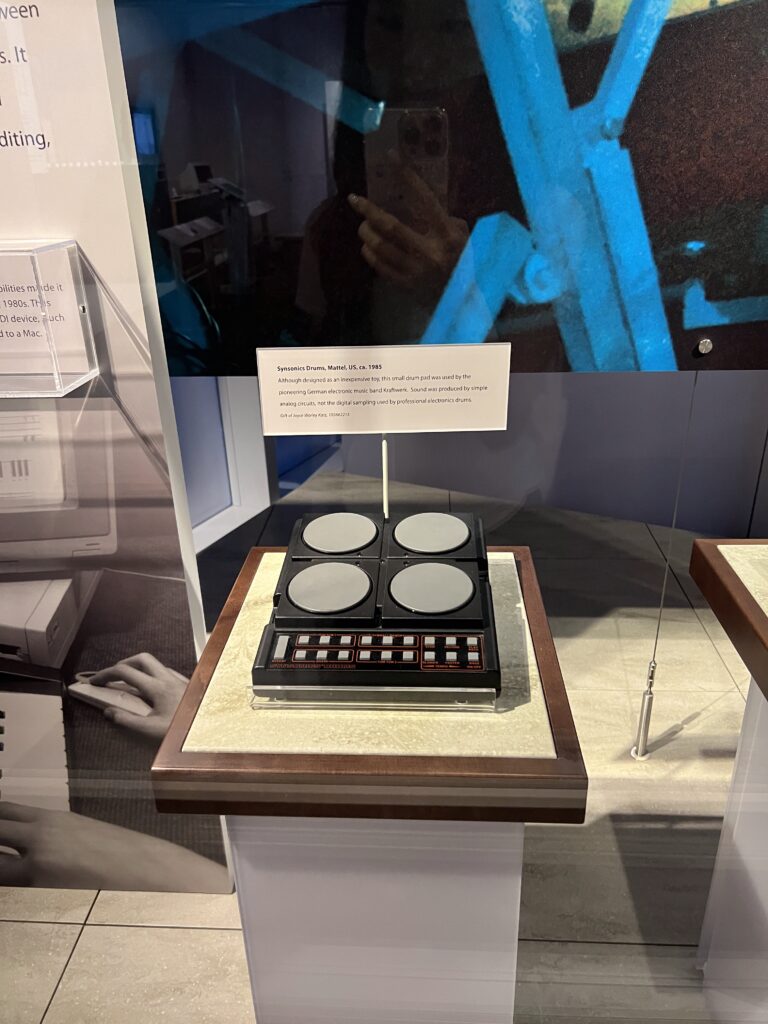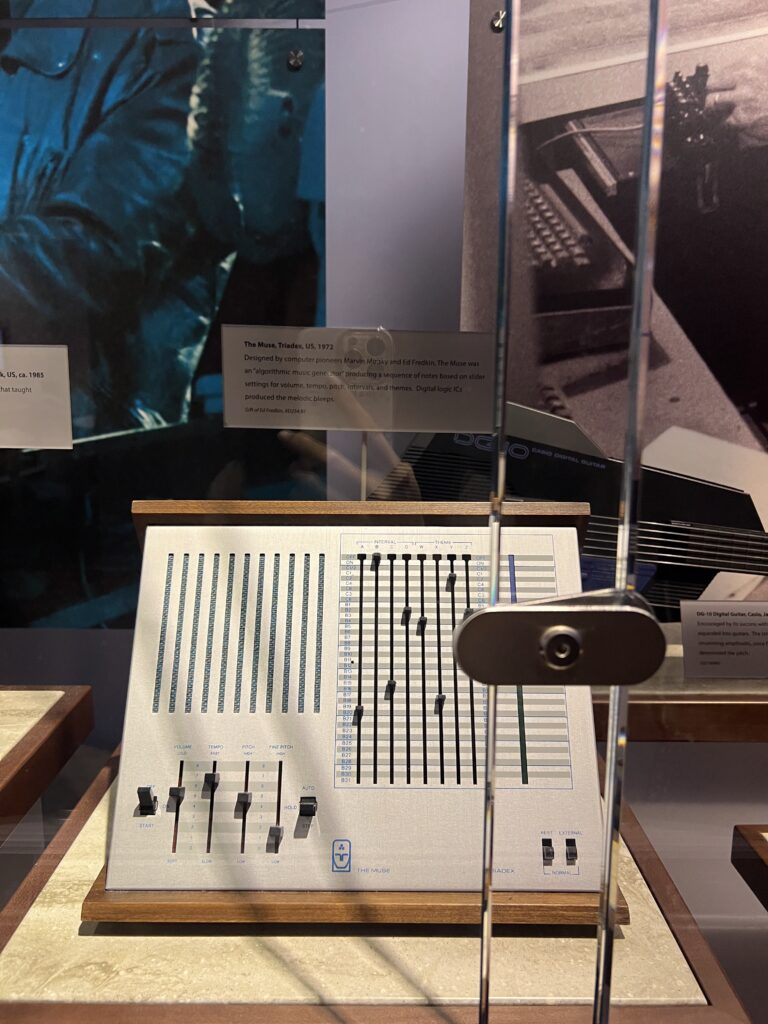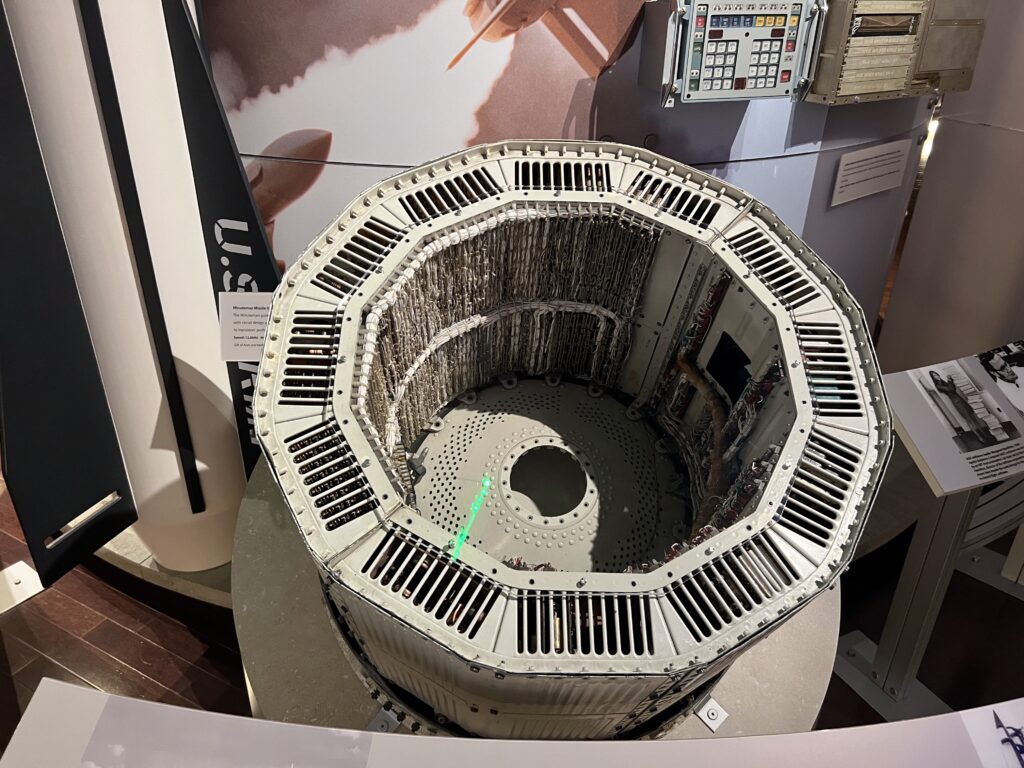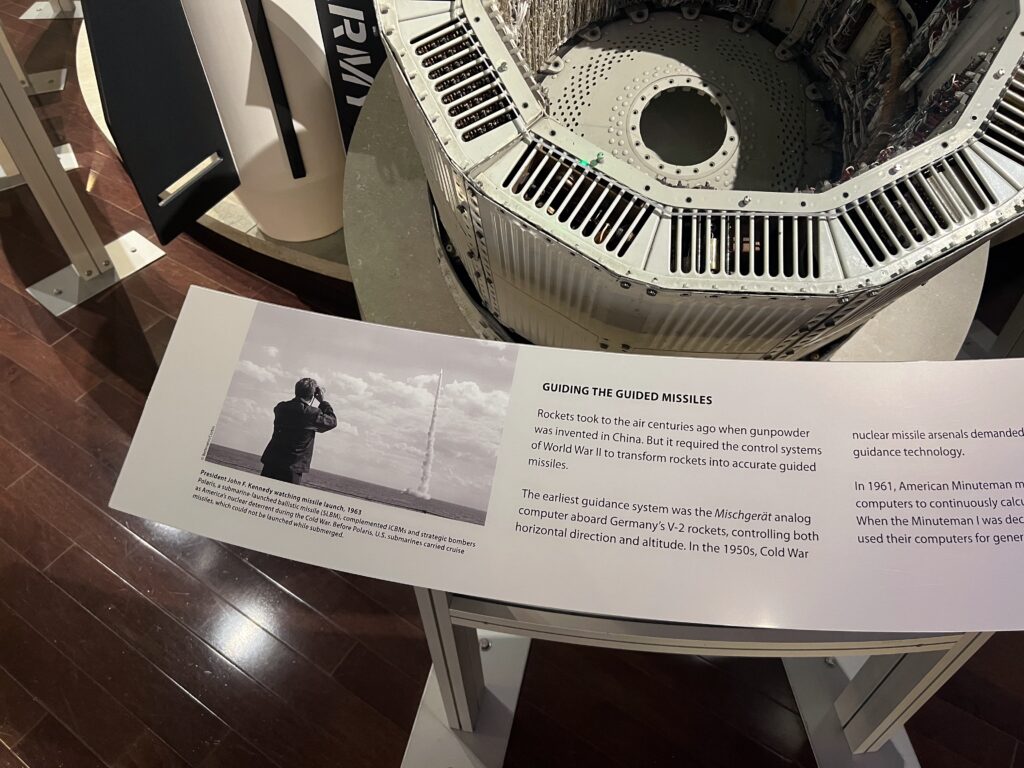The CHM didn’t feel like a traditional museum to me, instead it felt more like entering a story. The experience began in a dark hallway that resembled the entrance of a cinema, as if the museum wanted visitors to “set aside reality” for a moment before stepping into a different time. I walked in with curiosity.
Once inside, my initial excitement quickly met a sense of visual overload. The space felt crowded, not just with visitors, but with information. Artifacts were packed closely together and some corridors were so narrow that one person pausing meant no one else could pass or even see the display. Even with some signs and instructions, the path wasn’t intuitive. I often found myself unsure of where the exhibition wanted me to go, or whether I was experiencing it in the intended order. Overall, I left with the constant worry of missing something meaningful.
What surprised me most was the sheer range of worlds computing had entered. CHM didn’t present computers as isolated machines but as catalysts that shaped industries, imaginations and culture. Seeing the systems Pixar used to create Toy Story, the scientific insturments tied to aerospace and physics, and hardware that morphed its form to meet entirely different professional needs. All of it revealed how quickly computing escaped the lab and embedded itself everywhere. I didn’t expect the exhibition to extend so deeply into music, gaming, and digital creativity either. Those electronic instruments and vintage consoles pulled the history closer to our generation, bridging what we learn in class with the digital textures of our daily lives.



The new exhibitions reinforced this feeling of prosimity. Chatbots Decoded: Exploring AI felt like a physical manifestation of concepts that have been circulating online for years. Make Software: Change the World! drew a crowd that gravitated toward the Photoshop section.
Among all the objects, the one that stayed with me was a guided missile’s early onboard computer, its “brain.” Designed to calculate direction and altitude mid-flight, it marked a turning point in computing: the moment intelligence left the desk and entered motion, speed, and uncertainty. Yet what captivated me wasn’t just its historical importance, it was its personality. The machine looked uncannily like a front-loading washing machine: cylindrical, metallic, and stuffed with wiring that resembled tangled laundry mid-spin. It felt less like military hardware and more like a diligent character that once worked under immense pressure. This small moment of resemblance made the object unexpectedly human, and strangely endearing.


Reflecting on the museum afterwards, I realized that what moved me was the texture of progress. Technology didn’t evolve neatly or elegantly. It stumbled, stretched, collided with culture, and shaped our emotional lives along the way. CHM captured that beautifully. It reminded me that the story of computing is about how technology keeps rewriting what it means to create, to communicate, and to imagine.
Spelling confirmed by ChatGPT 5